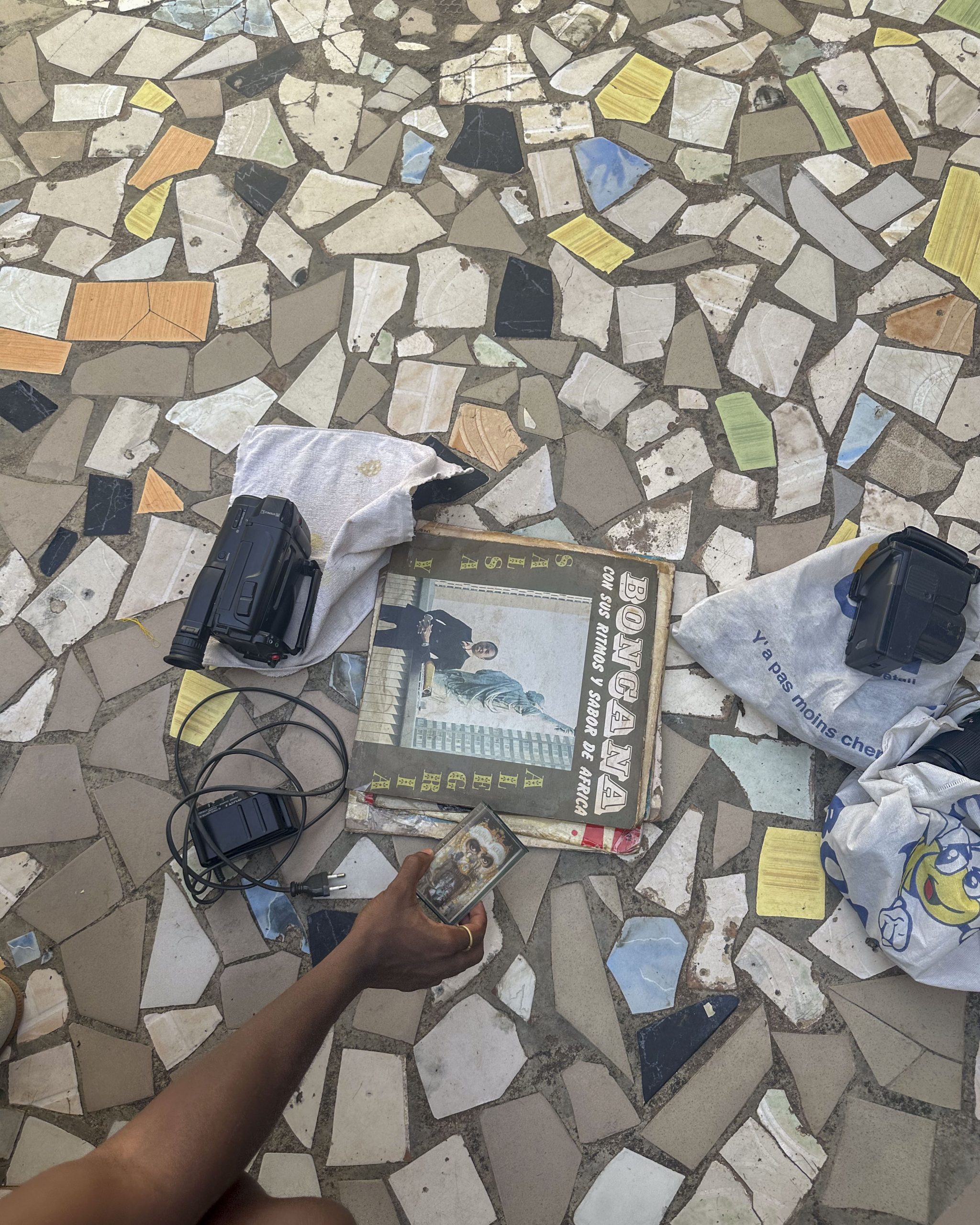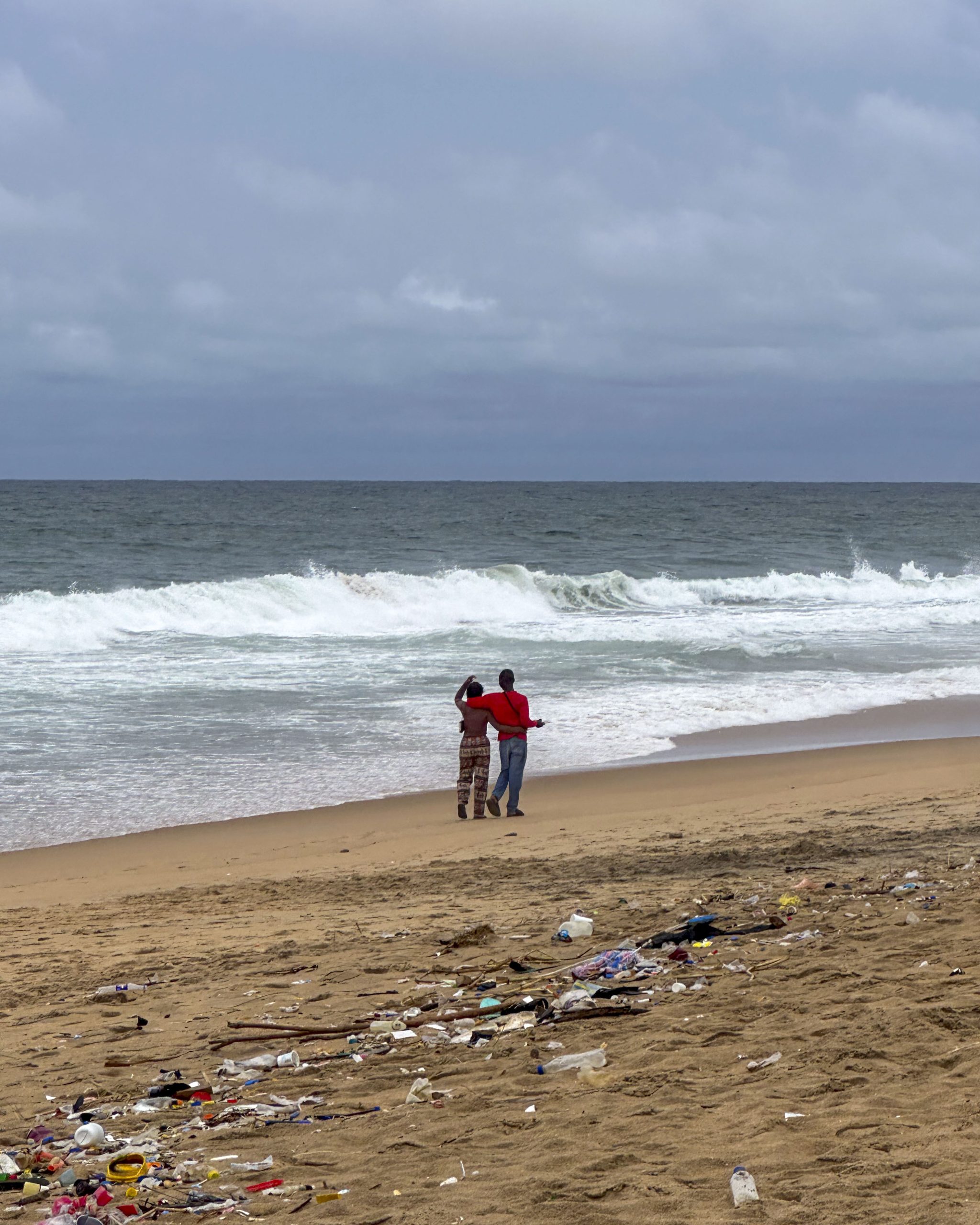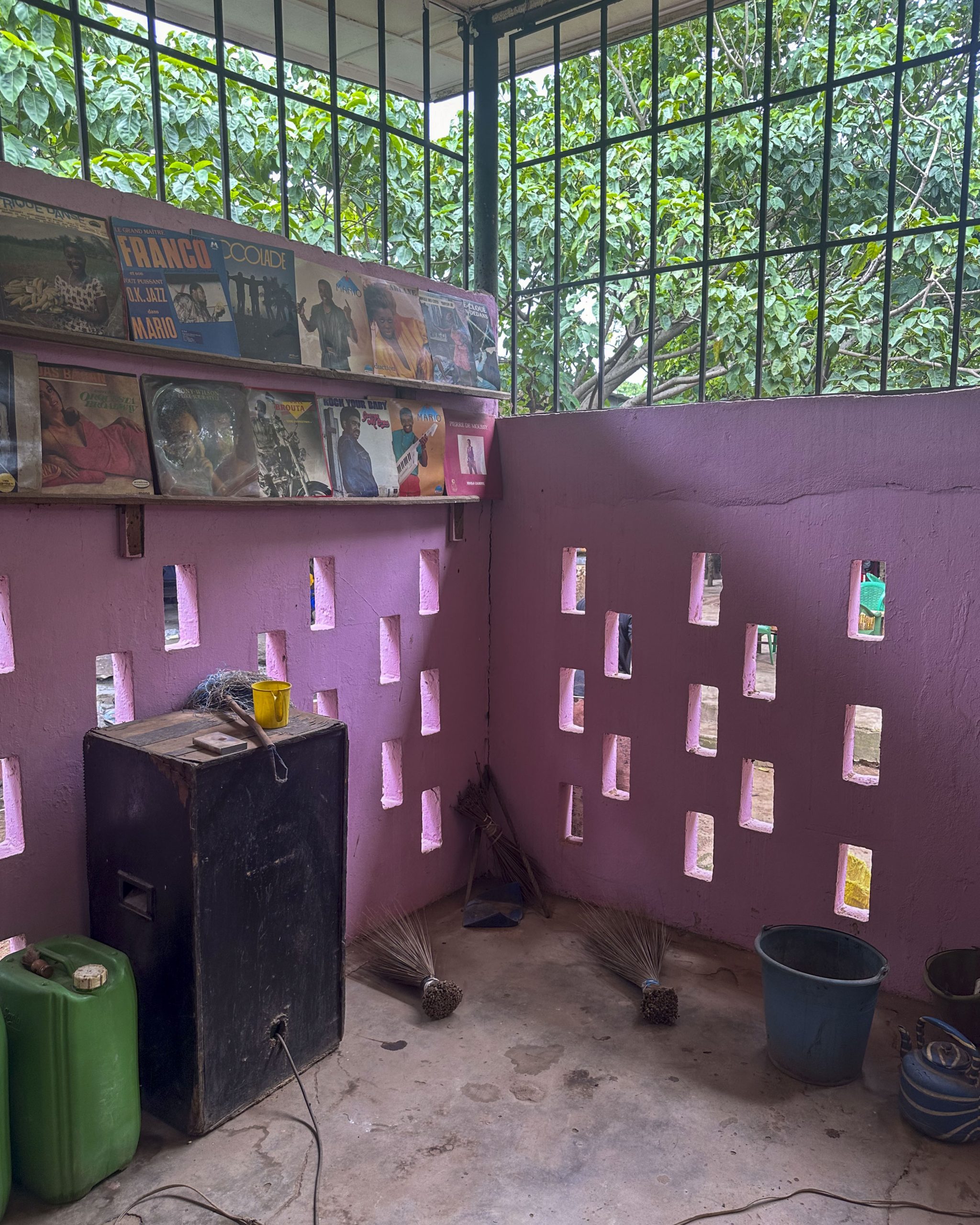Recently, I had the opportunity to engage with Swiss Photographer Ianne Kenfack, who embarked on a research trip in Abidjan from 27th May 2024 to 10th June 2024. During our interview, she explained that her primary focus was to document her peers — what she described as “a photographic story of young African creatives living and creating art on African soil.”
Supported by Pro Helvetia, Kenfack’s immersion in the local art scene of Abidjan was further strengthened by shadowing Ivorian artist and archivist, Cédric Kouamé
In sharing her motivations behind her research trip to Abidjan and her chosen subject matter within the trip, Kenfack explains, “My journey into photography began in 2015 with a simple desire to capture precise and authentic visual representations of contemporary youth, particularly from my own generation.” Recognizing photography’s dual role as a witness to time and a crucial archival tool, her artistic evolution led her to delve deeper into themes challenging the portrayal of black bodies in Western media, driven by a desire to broaden narratives about black identity.

This exploration naturally brought the Swiss photographer back to roots, using photography to document and explore why many of her peers chose to return and stay. This curiosity forms the foundation of her current focus: a photographic study of the daily lives of young African creatives, inspired by renowned artists like Malick Sidibé and Samuel Fosso.
Abidjan was a natural choice for her research, influenced by its status as a Francophone city with a shared cultural background. Through connections like Isaac Luutu of VillageBoy, a Ugandan clothing brand, Ianne met Cédric Kouamé, whose approach to archiving and dedication to uncovering African cultural artefacts deeply resonated with her.
“During many of our conversations before my arrival, Cédric revealed hidden facets of Abidjan’s culture, highlighting the city’s emerging significance as a cultural hub,” she notes. This connection, combined with her need for African-themed archives to enrich her research, solidified Abidjan as the ideal environment for her exploration.
Curious about methods to uncover hidden facets of Abidjan’s youth culture beyond surface-level observations, I posed the question to Kenfack. She explained, “Building on my background in documenting nightlife scenes, I delved deeper by focusing on the underlying narratives and contexts that shape the lives of my peers.
Nightlife often serves as a microcosm of broader social trends and tensions, allowing me to explore not just the visible aspects but also the motivations, challenges, and aspirations of youth culture, capturing a more nuanced portrait.”
“Using my own cultural background, I tapped into collective memories and shared experiences, which helped bridge gaps and build trust, fostering more open and honest exchanges. Total immersion in the environment was essential—I became one with the community, understanding the daily rhythms and subtleties from within.”
She emphasises the importance of active listening, continuous dialogue, and approaching her research without preconceived notions, which enable her to uncover deeper layers of meaning and context.
“Most importantly, I relied heavily on shadowing Cédric, who was deeply involved in the subject of my research trip. This approach was crucial for gaining an insider’s perspective and accessing areas and insights that might have otherwise remained hidden” she says.
Kenfacks shares that the significance of her identity and experiences as a black woman helped her in shaping an approach to representation in Abidjan.
“I believe that art and photography are traditionally male-dominated fields, and even in most cultures, it is only in recent generations that men and women are beginning to share spaces and discussions more equally. Personally, I feel that in Africa, women’s voices are often still not heard or listened to, which made it even more essential and compelling for me to embed myself in these spaces as a woman. I believe that life being captured from a female perspective provides a unique and necessary lens in my work.

By engaging in genuine dialogue and building relationships based on mutual respect, I was able to reflect the true essence of each individual and their stories. This approach not only highlighted their unique experiences but also contributed to a more inclusive and accurate representation of young Ivorian creatives.”
I then asked about the practical steps taken to facilitate cross-cultural dialogue through her photography. She recounts that during her research trip in Abidjan, she would use Instagram stories to share glimpses of her day in the city’s vibrant culture. This, along with her collaboration with local artists like Cédric Kouamé, laid the groundwork for broader engagement.
“Collaborations with local artists, such as the ongoing project with Isaac and Cédric, further this goal by using photography as a base for collaboration and cultural exchange. We implemented a swap system where clothing and artworks were exchanged and/or gifted in the spirit of cultivating cross-country exchanges” said Kenfack.
In addition to these initiatives, she adds “The production and diffusion of easily shared, collected, and stored bodies of work such as printed publications address, in my opinion, the issue of archives often being withheld by Western institutions. By contributing to a “database” of African culture, I hope to preserve and share these cultural narratives. Given the digital age’s rapid pace, it’s crucial to maintain accessible archival techniques.”
Lastly, through her artistic endeavours, Ianne seeks to provoke thought and ignite discussions on the themes she explores. By documenting Abidjqan’s emerging creatives, she aims to promote connections and dialogue between Ivorian artists and global audiences, emphasising shared human experiences that cross cultural and geographic boundaries.
In discussing the broader impact and aspirations of her work, Kenfack said “We could amplify the collaborative work with Isaac and Cédric resulting from my research trip through curated platforms and spaces that resonate globally. Through these avenues, we could host workshops and art talks focusing on archiving collective African memories and experiences, using my photography as a cornerstone for insightful discussions and cultural reflection. These workshops could serve as dynamic forums where diverse perspectives converge, cultivating cross-cultural dialogue and mutual understanding.'”
Wrapping up our conversation, Kenfack discussed her strategies beyond documenting the present to explore the dreams and aspirations of young people in Abidjan for their future. She emphasised the potential in forming alliances between organisations like Pro Helvetia and local entities, including emerging art institutions.
“By exploring such avenues we can provide broader exposure and opportunities for young Ivorian artists to pursue their creative aspirations on a global scale. I am personally committed to researching ways I could mediate such collaborative opportunities and forge strong connections between myself, Swiss counterparts, and Ivorian artistic communities. I would love to facilitate skill-sharing through my own art practice and have the means to address the existing infrastructure gaps for analogue photographers (like myself) and support the development of lab techniques locally. ”
Reflecting on my chat with Kenfack, I initially reviewed her work beforehand, but our conversation brought new depth to her practice and approaches. It reshaped my perspective, particularly in how she depicts African bodies divergently from Western conceptualizations. Hearing about her experiences in Abidjan has left me eager to witness how her focus on capturing contemporary youth evolves and integrates with her previous projects and creates new paths for her.

This story is produced in the context of an editorial residency supported by Pro Helvetia Johannesburg, the Swiss Arts Council.



















































